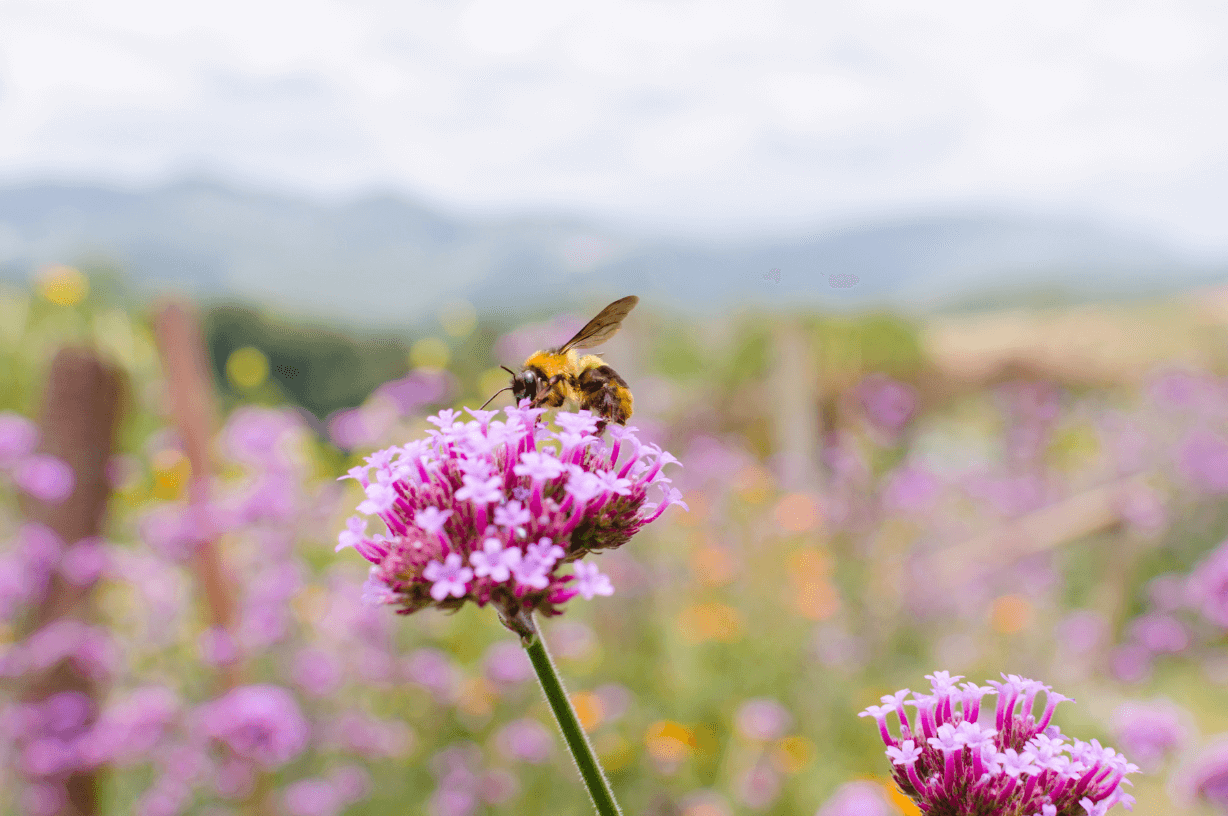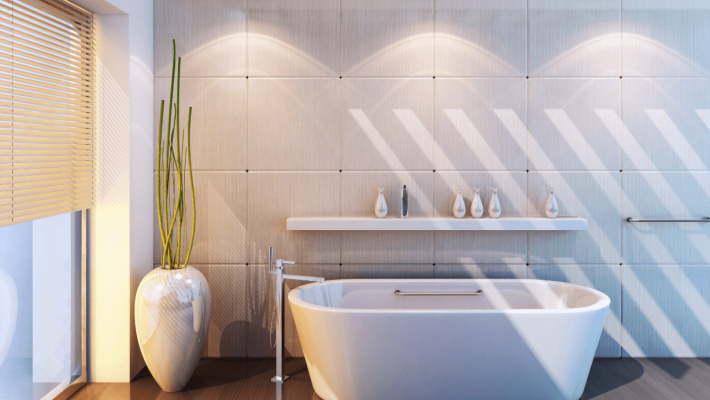There’s been a lot of buzz about bees lately, and not without reason.
Bees are essential pollinators, so they are pivotal when it comes to maintaining the world’s food supply. Unfortunately, bee populations have been on the decline in recent years due to pesticide exposure, habitat loss and climate change. Without a sharp reversal of course, the bee population is in serious trouble – and, by extension, so is our own.
If you’re looking at your yard or garden and wondering what you can do to create a bee-friendly yard that will give our bumbly little friends food, shelter and a place to nest, here are some tips that can help:
Plant a Bee-Friendly Garden
While a nicely manicured lawn that’s free of dandelions and clover may look neat, it is not the most optimum habitat for bees. That’s partially why unstructured yards that rely heavily on local plants to create a “cottage garden” effect have become so popular in recent years.
The first step in creating a bee-friendly yard is to plant a diverse array of flowers and plants that provide nectar and pollen throughout the growing season. Bees are attracted to a wide range of flowering plants, including herbs and native wildflowers. Some of the best bee-friendly plants include:
- Lavender
- Sunflowers
- Coneflowers
- Black-eyed Susans
- Bee balm
- Salvia
- Zinnias
- Marigolds
- Rosemary
- Foxglove
- Asters
- Dahlias
- Daisies
- Mint
When choosing plants for your garden, aim to have a mix of different flower shapes, sizes and colors to attract a variety of little pollinators. You can also consider planting flowers with different bloom times to provide a steady source of food throughout the season. Crocuses can provide food in early spring, for example, while mint and lavender will keep blooming well into autumn.
What if you aren’t ready to give up your lovely green lawn, however? Well, you can still plant a bee-friendly garden around the perimeter, between hardscape elements or in the back, where it won’t disturb the overall landscaping aesthetic.
Be Liberal with Flowering Trees and Shrubs
Flowering trees and shrubs can provide a valuable source of nectar and pollen for bees, especially in the early spring when many other plants may not yet be in bloom.
Consider planting bee-friendly trees and shrubs like apple, crabapple, cherry, dogwood and blueberry to provide additional food sources for bees, as do most fruit trees. Bees also like walnut trees, chestnut trees and numerous flowering shrubs.
All of these plants, trees and shrubs have the added benefit of being attractive and graceful additions to your landscape. Also, some of the above even offer natural shade that can help make your outdoor areas more habitable to humans and bees alike during the hottest days of summer.
Ditch the Pesticides and Herbicides
The number one thing you can do to help the bee population rebound is to throw out your pesticides and herbicides entirely.
Unwanted weeds may be an eyesore when they start popping up between cracks in the pavement or in your flower beds, but herbicides can be deadly to bees and other pollinators.
Pesticides, too, are harmful to bees and other pollinators, so it’s important to avoid using them in your garden. Instead, try using natural pest control methods like hand-picking aphids off the rose bushes, using insecticidal soap or introducing beneficial insects like ladybugs and lacewings to control the pests.
If you must use pesticides, choose products that are labeled as safe for bees and apply them early in the morning or late in the evening when bees are less active.
Create and Maintain a Bee Bath
Bees need a source of water to drink and cool down on hot days – so set up a “bee bath” in your backyard to help the little fellows out!
You can create a simple bee watering station by filling a shallow dish with water and adding rocks or sticks for bees to perch on. Place the dish in a sunny spot near your garden and be sure to refill it regularly to keep the water clean. If you feed the birds or local squirrel population, you can easily add “refilling the bee bath” to your daily routine.
Provide Natural Shelter Sites
Bees need shelter from the elements, so providing places for them to hide can “bee” beneficial. You can create bee shelters by leaving areas of your garden un-mulched or by stacking branches or logs in a quiet corner of your yard. This provides a safe place for bees to rest and take shelter during inclement weather conditions.
Just make certain that whatever materials you use – including cedar logs or wood boards – haven’t been treated with any chemicals. Those could sicken the bees and undo all of your eco-friendly efforts.
You can also create natural pockets for the bees to hide simply by avoiding bare soil in your yard. While hardscaping with dirt and rocks has become trendy because it helps with water conservation, that kind of landscaping is an actual desert for local bees.
Instead of leaving dirt between ornamental stone elements in your yard, use groundcover plants like clover, creeping myrtle, thyme or violets as truly beautiful and useful alternatives for the local bee population.
Learn More About Your Local Bees
Can you tell a honeybee from a carpenter bee? Would you know a bumblebee from a mason bee? Most people wouldn’t – but learning more about the different species of bees in your area can help you feel comfortable around our buzzy little friends.
You can also learn more about the local plants they love and what it takes to help the bee population rebound. You may even find yourself inspired to sponsor a hive or take a more proactive approach to conservation efforts.
Taking these simple steps to create a bee-friendly yard can help support the health and well-being of these pollinators – and, by extension, the entire world. Not only will you be providing a crucial habitat for your bee population, but you’ll also be creating a beautiful and vibrant garden that will bring joy to your outdoor space. With a little effort and planning, anyone can make a positive impact on bee populations and contribute to a healthier, more sustainable ecosystem.
amanda.phillips@talktotucker.combill.ingram@talktotucker.combrad.layton@talktotucker.comeditors-pickerina.pribyshchuk@talktotucker.comfeaturedlloyd.zimmerman@talktotucker.commark.callahan@talktotucker.commary.layton@talktotucker.compriscila.hale@talktotucker.comterri.mcgraw@talktotucker.com



